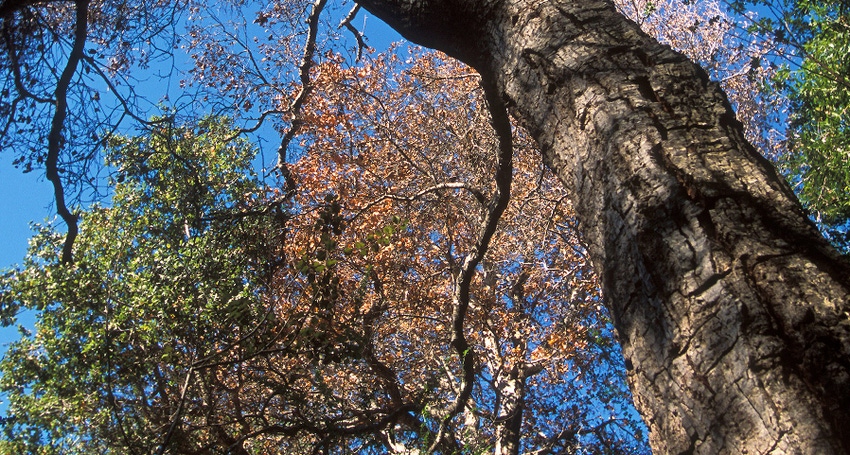November 9, 2022

State and federal agriculture officials have confirmed the presence of Phytophthora ramorum, which causes sudden oak death, at a botanical garden and private residence on Oregon's central coast.
Oregon Department of Agriculture and the USDA's Animal and Plant Health Inspection Service will conduct a ground-based survey in and around the neighborhood in Lincoln City, Ore., where officials detected P. ramorum.
The purpose of the survey is to find out if the invasive pathogen has spread beyond the affected properties and what type of treatment and eradication efforts are needed, state officials say. ODA and USDA APHIS suspect that the pathogen was introduced into Lincoln City through the planting of infested nursery stock several years ago.
The invasive fungal-like pathogen is most well known as the causal agent of sudden oak death (SOD). Since its first detection in northern California in the mid 1990s, P.ramorum has been found to naturally infect over 100 different plant species including multiple high-value ornamental plant species.
On these susceptible ornamental species symptoms include leaf spots, lesions along the twig and/or leaf mid-vein. Multiple plant pathogens cause similar symptoms, so the disease must be confirmed with laboratory testing. A complete host list can be found here.
P. ramorum was first detected in Oregon in wholesale nursery stock in 2003. It has been detected in limited nursery sites since then. In 2001, the pathogen was confirmed for the first time in the forests outside Brookings in Curry County.
Federal and state quarantines were established to prevent the spread of this pathogen in soil and infected plant material. To meet quarantine requirements, the ODA continues to monitor and test nursery stock for the presence of P. ramorum in cooperation with USDA annually.
The public can help slow the spread by buying healthy plants from reputable nurseries and avoiding purchasing plants online. In addition, if you live, work or recreate in the quarantined area of Curry County, do not remove plants from the forest, do not remove soil and stay on established trails and respect any trail closures. Finally, clean and disinfect all equipment, including your vehicle, bikes, and pet paws, with a 10 percent bleach solution.
Source: Oregon Department of Agriculture
About the Author(s)
You May Also Like






